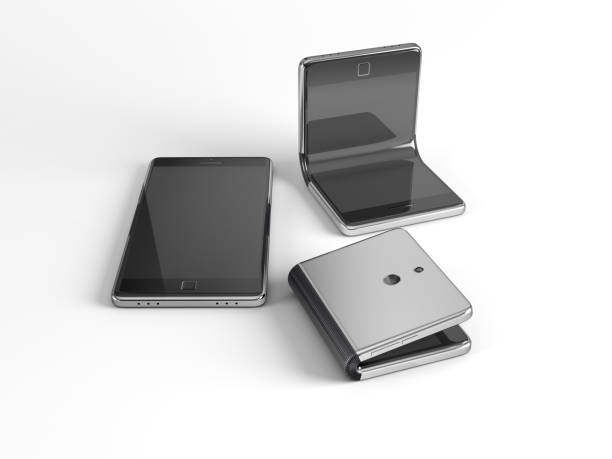Foldable Smartphones: Behind the Bend
As flexible displays inch closer to mainstream adoption, manufacturers continue to refine the delicate balance between innovative design and practical functionality. With each new generation, foldable smartphones evolve beyond mere novelty toward becoming legitimate alternatives to conventional flagships. This transition represents a significant shift in mobile computing, challenging our expectations of what smartphones can be while introducing new possibilities for interaction and portability.

The Journey to Flexibility
The concept of foldable displays has tantalized consumers for over a decade. Early prototypes from companies like Samsung and LG appeared at trade shows as far back as 2011, showcasing screens that could bend without breaking. However, these demonstrations remained firmly in the realm of “concept technology” – impressive in controlled environments but nowhere near ready for consumer pockets.
The fundamental challenge was creating a display material that could withstand thousands of folding cycles without degrading. Traditional glass displays shatter when bent, while early plastic alternatives scratched easily and developed unsightly creases. Material scientists tackled this problem by developing ultra-thin glass composites reinforced with specialized polymers, eventually creating substrates that could flex repeatedly while maintaining visual clarity.
Equally challenging was the hinge mechanism. Early foldables suffered from dust infiltration that damaged internal components, prompting manufacturers to develop increasingly sophisticated hinge designs with multiple brushes and covers to seal vulnerable areas. These engineering hurdles contributed to multiple delayed launches, most notably Samsung’s Galaxy Fold in 2019, which was recalled shortly after review units began failing.
The Current Landscape
Today’s market features several distinct approaches to foldable design. The book-style fold, pioneered by the Galaxy Fold series, opens to reveal a tablet-sized interior display while maintaining a conventional exterior screen for quick interactions. The flip-style design, exemplified by Samsung’s Z Flip and Motorola’s revived Razr, focuses on compactness by folding a traditional smartphone form factor in half.
Chinese manufacturers have further diversified the category with tri-fold designs and outward-folding mechanisms that eliminate the need for separate external displays. Each approach represents different priorities in the balance between screen size, portability, and durability.
Pricing remains the most significant barrier to widespread adoption. Current flagship foldables typically start around $1,800 for book-style models and $1,000 for flip-style devices – a premium of 50-80% over conventional flagships. This positions them as luxury items rather than mainstream alternatives, though prices have gradually decreased with each generation.
Technical Compromises and Solutions
Foldable smartphones involve inherent compromises that manufacturers continue to address. The crease at the fold line remains visible on all current models, though its prominence has diminished with each generation. Battery capacity is typically smaller than in standard phones of equivalent size due to the split internal design and complex hinge mechanisms occupying valuable space.
Camera systems generally lag behind those in premium conventional smartphones, as the folding design limits available thickness for camera modules. Manufacturers have responded with computational photography advancements to compensate for smaller sensor sizes.
Water and dust resistance has improved dramatically, with recent models achieving IPX8 ratings for water immersion, though dust protection remains challenging around hinge areas. Screen protectors present another ongoing challenge – early removable protectors damaged easily, while integrated protectors couldn’t be replaced when worn, leading to a shift toward factory-installed replaceable protectors in newer models.
Software Evolution
Perhaps the most significant improvements have come through software optimization. Early foldables suffered from awkward app scaling and poor multitasking implementations. Today’s foldable-specific interfaces feature thoughtful touches like flex mode, which automatically adjusts content when a device is partially folded, and app continuity that seamlessly transitions experiences between screens.
Multitasking has evolved significantly, with drag-and-drop functionality between applications and persistent app pairs that launch simultaneously in split-screen configurations. Third-party developers have increasingly embraced these capabilities, designing responsive interfaces that adapt elegantly to changing screen dimensions.
Google has accelerated this progress by incorporating foldable-specific APIs into Android, providing developers with standardized tools for creating adaptable experiences. These improvements have transformed foldables from awkward technology showcases into productivity-focused devices that leverage their expanded screen real estate in meaningful ways.
The Future Outlook
As manufacturing yields improve and economies of scale take effect, analysts project foldable smartphone prices will continue to decline over the next three years, potentially reaching price parity with premium conventional smartphones by 2026. This could trigger a significant market shift if durability concerns have been adequately addressed.
Several manufacturers are exploring variations beyond the current paradigm, including rollable displays that extend rather than fold and devices with multiple hinges enabling various configuration options. These concepts suggest the category will continue to diversify rather than converge on a single optimal design.
The most intriguing potential lies in hybrid devices that blur traditional product categories. Current book-style foldables already function as smartphone-tablet hybrids, but future iterations could incorporate keyboard accessories or stylus integration to replace laptops for some users. If manufacturers can solve the thickness and durability equations, foldable technology could eventually reshape our entire relationship with mobile computing devices.
Whether foldables represent the future of smartphones or merely an interesting branch of evolution remains uncertain. What’s clear is that the technology continues to mature rapidly, transforming from experimental luxury to practical alternative with each generation. As prices fall and durability improves, these flexible devices will face their true test in the mainstream market.





